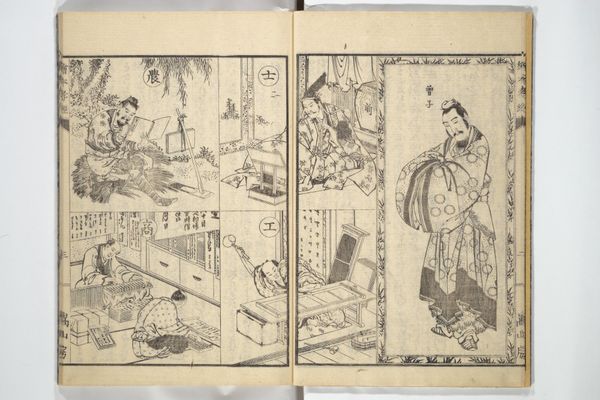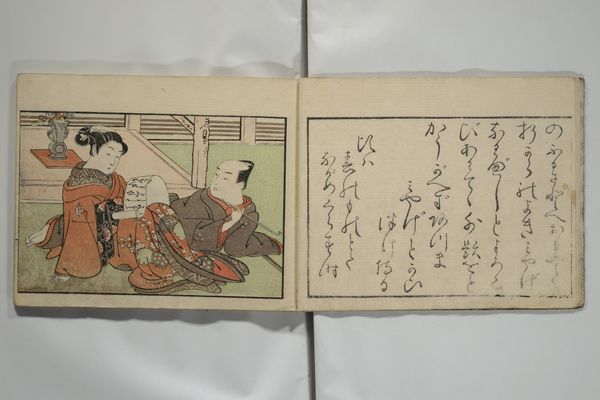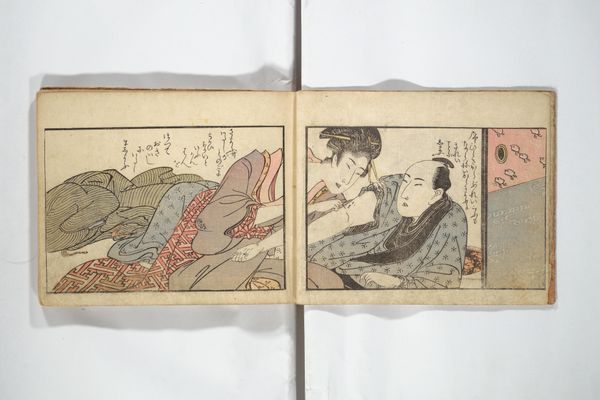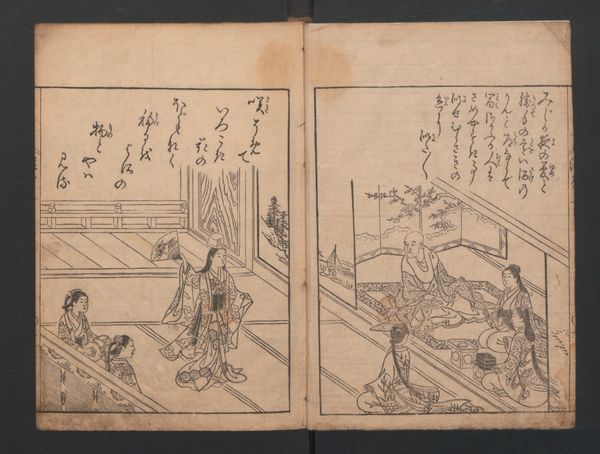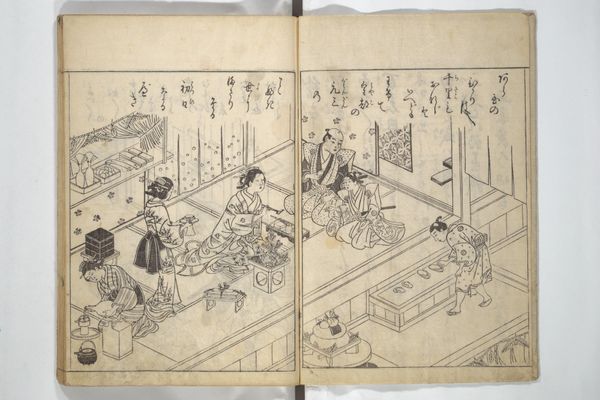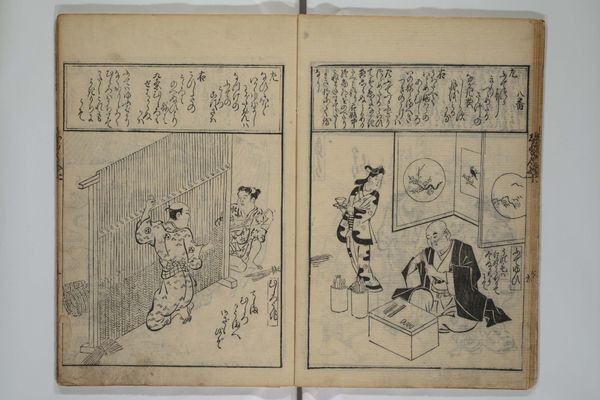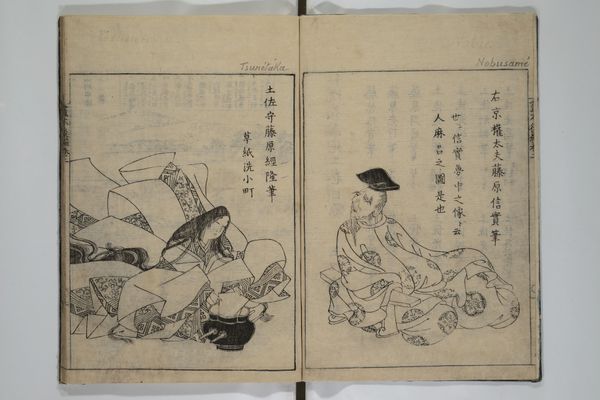
Dimensions: each: 5 9/16 × 8 1/16 in. (14.2 × 20.5 cm)
Copyright: Public Domain
Okumura Masanobu made this woodblock print called Love Poses in the Narabi Hills, sometime in the mid-18th century. Woodblock prints in Japan were not high art. They were a popular, commercial art form, designed to appeal to a broad audience. This print, like many, depicts the licensed pleasure quarters of Japan. On the left, we see fashionable people visiting a teahouse in the Narabi Hills, a well-known pleasure district in Edo, now Tokyo. On the right, a man sits, perhaps composing a poem for his lover. Notice the sheer amount of written text on the print; text was often integrated into the image as part of the overall design. The subject of courtesans and lovers was very popular, and prints like this one were purchased as souvenirs and mementos. The social function of these prints was to advertise the pleasure quarters and create a fantasy around them. To understand the social and cultural context of these images, historians can consult a range of sources, including popular literature, government documents, and other visual materials. The meaning of art is always contingent on its historical context.
Comments
No comments
Be the first to comment and join the conversation on the ultimate creative platform.
